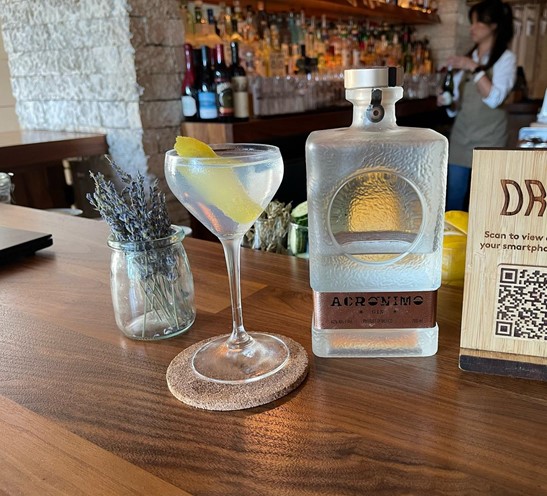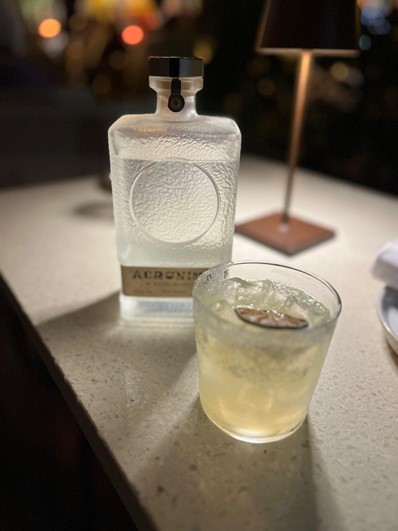Fun Facts About Gin That Will Impress Your Guests

Do you want to be the most interesting person at your next gathering? These gin fun facts will definitely get people talking and leave your friends amazed, whether you love gin or just like to share interesting facts.
Gin has a long and interesting history, from its medicinal roots to the new things that people are doing with it today.
Table of Contents
The Fascinating History of Gin
A lot of people don’t know that gin was first used as a medicine. The first version of gin, which was called “jenever,” was made by Dutch doctor Franciscus Sylvius in the 1650s. He mixed juniper berries with grain alcohol to help with kidney problems and other health issues.
What started out as a medicine quickly became one of the most popular drinks in the world.
The British found gin while fighting in the Low Countries, and they loved it right away. But they couldn’t say “jenever” right, so they called it “gin” instead.
This linguistic twist turned into one of the most interesting gin facts that many cocktail lovers don’t know.
18th Century Gin Craze in London
Historians call the 18th century in London the “Age of Gin Craze.” During this time, people drank a lot of gin. Some estimates say that the average Londoner drank more than two pints of gin a week!
The government was so worried about people’s health that they passed several Gin Acts to limit how much gin could be made and drunk.
During this time, gin was actually cheaper than beer, which made it popular with working-class people. People sold gin from wheelbarrows on the street, and it was called “mother’s ruin” because it hurt families and communities so much.
Fun Facts About Gin Production That Will Surprise You
Here are some gin fun facts and secrets about making things that will shock your dinner guests:
- The juniper berry is not a berry at all; it is a small cone from an evergreen shrub.
- Premium gin distilleries get their botanicals from more than 40 different countries.
- Some gin makers use elephant poop in the distillation process. Don’t worry, it’s safe!
- The strongest gin ever made had 95% alcohol by volume.
Most gin distilleries keep their botanical recipes secret, like state secrets. For example, Bombay Sapphire uses 10 botanicals, such as angelica root from France and orris root from Italy. On the other hand, Hendrick’s adds cucumber and rose petals to make their unique taste.
New Ideas and Trends in Modern Gin
Modern gin makers are pushing the limits in ways that would shock old-school distillers. Some craft distilleries now use botanicals that they find in their own area to make gins that taste like those areas.
Some people have tried putting gin in barrels to age it, which has led to a new type of gin called “Old Tom” gin.
A lot of people don’t know that pink gin gets its color from real plants and not fake coloring, but it’s become very popular. Also, navy-strength gin has at least 57% alcohol in it.
This is the proof level at which gunpowder will still ignite even when soaked in gin. The Royal Navy used this test to make sure their gin wasn’t watered down.
Celebrity Gin Connections You Didn't Know About
Your guests will be shocked by these fun gin facts about celebrity gin:
- Winston Churchill’s mother came up with the Manhattan cocktail, which was originally made with gin instead of whiskey.
- At Buckingham Palace, Queen Elizabeth II has her own gin distillery.
- Ryan Reynolds is not only an actor; he also owns Aviation Gin.
- In fact, James Bond’s famous preference for martinis changed over the course of the films.
- There is a long history of gin being connected to aviation. Many pilots during World War II carried gin as emergency rations. Today, there are several aviation-themed gins that pay tribute to this tradition.

Different Types and Styles of Gin Around the World
Now for some more gin fun facts. Over the years, different countries have come up with their own styles of gin. Dutch jenever tastes more like malt and is closer to the original recipe.
Spanish gin is often served in big balloon glasses with fancy garnishes. Japanese gin uses plants that grow in Japan, like yuzu and sakura blossoms.
There are now more than 4,000 gin brands available around the world because the craft gin movement has taken off. This is a 1,000% increase since 2000, which makes gin one of the spirit categories that is growing the fastest.
FAQs
1. What makes gin different from other types of alcohol?
Gin’s main flavor is juniper, which sets it apart from vodka, whiskey, and other spirits. For a spirit to be legally called gin, the juniper berries must be the main plant in it.
2. Is it true that gin was first used as medicine?
Yes! In the 1650s, Dutch doctor Franciscus Sylvius made gin as a medicine to help with kidney problems and other health issues. He used juniper berries and grain alcohol.
3. What does “navy strength” mean when it comes to gin?
Navy-strength gin has at least 57% alcohol because that’s the proof at which gunpowder will still catch fire even when soaked in gin. The Royal Navy used this test to make sure their gin wasn’t watered down.
4. How is London Dry gin different from regular gin?
London Dry gin must have at least 70% alcohol by volume, and only natural botanicals can be added during distillation. After distillation, it can’t have any artificial flavoring or coloring.
5. Are juniper berries really berries?
No! Even though they are called “berries,” juniper “berries” are actually small cones that grow on an evergreen shrub. This is one of the most surprising facts about gin that catches a lot of people off guard.
Final Thoughts
These fun gin facts show that this popular drink has a much more interesting story than most people know. Gin has changed a lot since it was first used as a medicine, but it still has its own unique flavor.
Share these interesting facts the next time you’re at a dinner party, and see how easily the conversation flows, just like a well-mixed gin and tonic.
These stories will make you the most interesting person at any party, whether you’re talking about the historical Gin Craze or how navy-strength gin got its name.
Keep in mind that the best gin fun facts aren’t just meant to impress others; they’re also meant to help you enjoy the rich history behind every sip.
